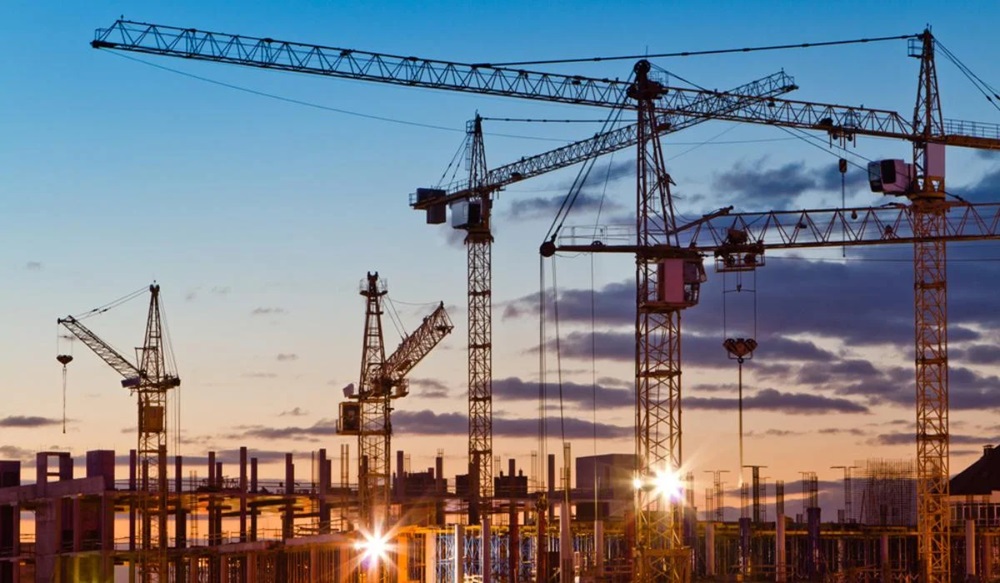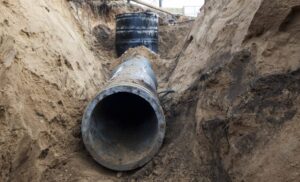
The Essential Guide to Crane Parts: Everything You Need to Know
The Anatomy of a Crane
A crane is a powerful machine used in various industries for lifting and moving heavy loads. To understand how a crane works, it is important to familiarize yourself with its anatomy. A crane consists of several key components that work together to perform complex lifting tasks.
The Different Types of Cranes
There are numerous types of cranes available, each designed for specific applications. Some common types include:
- Tower cranes
- Mobile cranes
- Crawler cranes
- Rough terrain cranes
- Overhead cranes
Each type of crane has unique features and capabilities, making them suitable for different projects and environments.
The Main Components of a Crane
A crane consists of several essential components, including:
- Mast: The vertical tower that provides stability and height to the crane.
- Boom: The long, horizontal arm that holds the load.
- Jib: An extension of the boom that allows the crane to reach further distances.
- Counterweights: Attachments that help balance the load and prevent the crane from tipping over.
- Hoist: The mechanism that lifts and lowers the load.
- Outriggers: Extendable legs that provide additional stability when the crane is in use.
The Functionality of Each Component
Each component of a crane serves a specific purpose in its overall functionality:
- The mast provides the crane with height and stability, allowing it to lift heavy loads to great heights.
- The boom and jib work together to extend the reach of the crane, enabling it to access difficult-to-reach areas.
- Counterweights ensure that the crane remains stable and balanced while lifting heavy loads.
- The hoist is responsible for lifting and lowering the load, using a system of ropes and pulleys.
- Outriggers provide additional support and stability to the crane, particularly when working on uneven terrain.
Understanding how each component functions is crucial for safe and efficient operation of a crane.
The Importance of Proper Maintenance
Maintenance is a critical aspect of crane ownership and operation. Regular inspections and preventive maintenance are essential to ensure the safety and reliability of the crane.
The Benefits of Regular Inspections
Regular inspections help identify any potential issues or defects in a crane before they become major problems. This allows for timely repairs, reducing the risk of accidents and equipment failure. Inspections also ensure that the crane meets all safety regulations and industry standards.
During an inspection, a qualified technician will thoroughly examine all components of the crane, including the structural integrity, mechanical systems, electrical systems, and safety devices. They will check for any signs of wear and tear, corrosion, or damage that could affect the crane’s performance.
The Role of Preventive Maintenance
Preventive maintenance involves performing routine tasks to keep the crane in optimal condition. This includes lubricating moving parts, inspecting and replacing worn-out components, and testing safety features.
By following a preventive maintenance plan, crane owners can minimize downtime, extend the lifespan of their equipment, and reduce the risk of costly repairs. Regular maintenance also improves the efficiency and productivity of the crane, ensuring smooth operation on job sites.
The Consequences of Neglecting Maintenance
Neglecting maintenance can have serious consequences for both the crane and the people working with it. Lack of maintenance can lead to equipment failure, accidents, and injuries. It can also result in costly repairs, unexpected downtime, and project delays.
Additionally, failure to comply with maintenance requirements can lead to legal and regulatory issues, with potential fines and penalties imposed on the crane owner. Therefore, proper maintenance is not just good practice but a legal and ethical obligation.
Choosing the Right Crane Parts
When it comes to crane parts, selecting the right ones is crucial for the safe and efficient operation of the crane. Here are some factors to consider when choosing crane parts:
Understanding the Different Types of Crane Parts
Crane parts can vary significantly depending on the type and model of the crane. Some common types of crane parts include:
- Wire ropes
- Sheaves and pulleys
- Crane hooks
- Crane wheels
- Brakes and clutches
It is important to have a thorough understanding of the different types of crane parts to ensure compatibility and optimal performance.
Factors to Consider When Selecting Crane Parts
When selecting crane parts, several factors should be taken into account:
- Quality: Choose high-quality parts from reputable manufacturers to ensure reliability and durability.
- Compatibility: Ensure that the parts are compatible with your specific crane model and specifications.
- Performance: Consider the performance characteristics of the parts, such as load capacity, operating temperature, and resistance to wear and tear.
- Cost-effectiveness: While cost is a factor, prioritize quality and performance over price to avoid compromising safety and reliability.
Where to Source High-Quality Crane Parts
When sourcing crane parts, it is important to rely on trusted suppliers or manufacturers. Look for companies that specialize in crane parts and have a proven track record of delivering high-quality products.
Online marketplaces and distributor websites are good starting points for finding a wide range of crane parts. It is also advisable to consult with crane manufacturers or maintenance professionals for recommendations on reliable suppliers.
The Future of Crane Technology
Crane technology is constantly evolving to meet the demands of modern construction and industrial projects. Here are some of the latest trends and innovations in crane design:
The Latest Innovations in Crane Design
Advancements in crane design are focused on improving efficiency, safety, and environmental sustainability. Some notable innovations include:
- Telematics and remote monitoring systems for real-time data tracking and predictive maintenance.
- Enhanced lifting capacities and reach through advancements in materials and engineering.
- Intelligent control systems for precise and automated crane movements.
- Electric and hybrid crane models to reduce emissions and noise pollution.
The Impact of Technology on Crane Efficiency
Technology plays a significant role in improving the efficiency of cranes. Automated systems, such as anti-sway technology and collision avoidance systems, enhance safety and productivity. Real-time data monitoring and predictive maintenance enable proactive maintenance planning, reducing downtime and optimizing performance.
Efficiency improvements in crane technology result in faster project completion, cost savings, and increased sustainability.
Predictions and Trends for the Crane Industry
As technology continues to advance, the crane industry is expected to witness several trends in the coming years:
- Increased integration of artificial intelligence and machine learning in crane operations.
- Greater emphasis on eco-friendly crane models and sustainable construction practices.
- Continued development of autonomous and remotely operated cranes.
- Digitization of crane operations through the use of digital platforms and IoT (Internet of Things) technologies.
These trends will shape the future of the crane industry, driving efficiency, safety, and sustainability.
In conclusion, understanding the anatomy of a crane, the importance of proper maintenance, choosing the right crane parts, and being aware of the future trends in crane technology are all essential aspects of working with cranes. By equipping yourself with this knowledge, you can ensure safe and efficient operation, reducing risks, improving productivity, and maximizing the lifespan of your crane.



